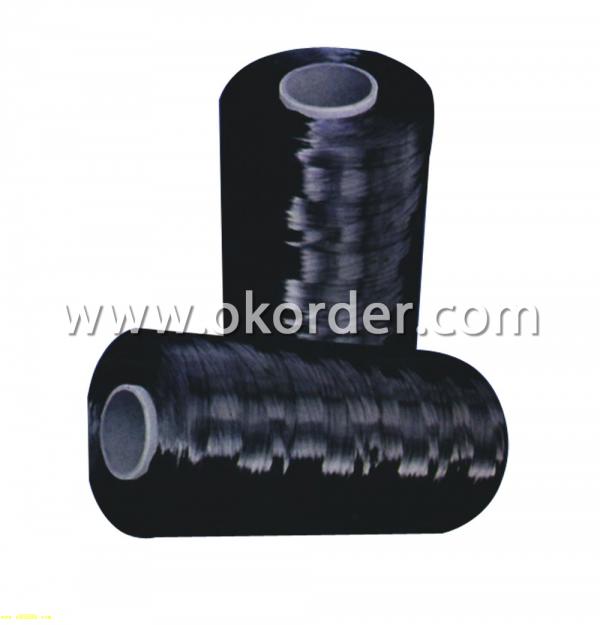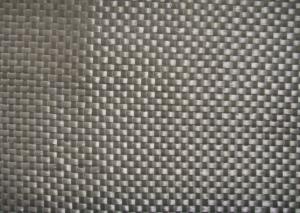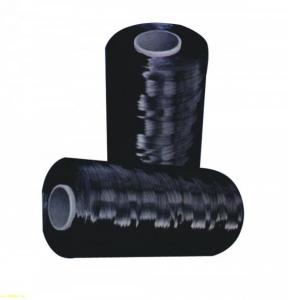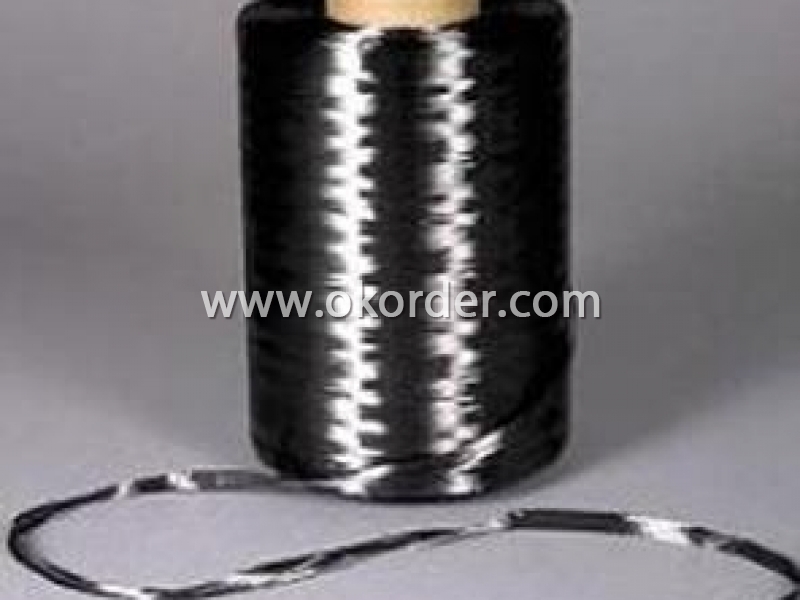Carbon Fiber 3K-T400
- Loading Port:
- China Main Port
- Payment Terms:
- TT or LC
- Min Order Qty:
- 100Kg m.t.
- Supply Capability:
- 1000Ton m.t./month
OKorder Service Pledge
OKorder Financial Service
You Might Also Like
Specifications Carbon Fiber 3K-T400
1. Material: carbonized polyacrylonitrile fiber
2. Filament number:3k
3. Fiber type: T400
4. Tensile strength: 360kgf/mm2
General Data of Carbon Fiber 3K-T400
Weaving Style: Unidirectional, Plain, Twill
Input Available: 3k, 6k, 12k Carbon fiber
Weight: 15 0 ~ 600g / m2
Roll length: To be specified
Typical Rangeof Carbon Fiber 3K-T400
Remark :The above parameters are only in common condition. In case of order, the parameters are subject to the customer's confirmation.
CWP : Carbon plain weave fabric
CWT : Carbon twill weave fabric
CWU : Carbon woven unidirectional fabric
Packaging of Carbon Fiber 3K-T400
Product is manufactured in form of a roll wound on a paper tube and then packed in a plastic film and placed within a cardboard carton. Rolls can be loaded into a container directly or on pallets.
Storage of Carbon Fiber 3K-T400
It is recommended that the carbon fiber fabric are stored in a cool and dry environment. Recommended temperature range of storage is between 10 ~ 30 degree and relative humidity between 50 ~ 75%.The carbon fiber fabric should remain in the packaging until just prior to use.
Packaging & Delivery of Carbon Fiber 3K-T400
Packaging Detail: carton
Delivery Detail: within 20 days

- Q:Is carbon a conductor?
- Carbon is an element, not an organization, and when the carbon atoms are arranged in different spatial forms, the physical and chemical properties of the substances formed are different. When the formation of lamellar material carbon atom with six ring as a unit, the material is a conductor, which is familiar to us when graphite, carbon atoms to form a tetrahedral structure, which is macroscopically when diamond is an insulator. There are many forms of carbon elements, which are not listed in one by one
- Q:What is the role of carbonation in carbonated drinks?
- The role of carbonation in carbonated drinks is to provide the refreshing and effervescent sensation that is characteristic of these beverages. Carbonation is the process of dissolving carbon dioxide gas into a liquid, typically water, under pressure. This results in the formation of carbonic acid, which adds a tangy flavor to the drink. Carbonation serves several purposes in carbonated drinks. Firstly, it enhances the taste by adding a unique bubbly sensation that stimulates the taste buds and gives a refreshing mouthfeel. The effervescence created by the carbonation also contributes to the overall sensory experience of the drink, making it more enjoyable to consume. Furthermore, carbonation acts as a natural preservative in carbonated drinks. The carbon dioxide gas inhibits the growth of bacteria and other microorganisms, thereby extending the shelf life of the beverage. This is particularly important for soft drinks that are often stored for extended periods before consumption. In addition to taste and preservation, carbonation plays a role in the presentation of carbonated drinks. The release of carbon dioxide gas from the liquid creates bubbles and fizz, making the drink visually appealing and enticing. This visual appeal is often associated with a feeling of luxury and indulgence. Overall, carbonation is an essential component of carbonated drinks, providing taste, preservation, and visual appeal. It enhances the sensory experience and contributes to the overall enjoyment of these beverages.
- Q:What is carbon steel, carbon manganese steel?
- Carbon steel: carbon content less than 1.35%, excluding iron, carbon and limited within the limits of silicon, manganese, phosphorus, sulfur and other impurities, excluding other alloy elements of steel. The performance of carbon steel depends mainly on carbon content. With the increase of carbon content, the strength and hardness of the steel increases, and the plasticity, toughness and weldability decrease.
- Q:How to test aldehyde group and carbon carbon double bond in acrolein
- Can be oxidized into carboxyl aldehyde with silver ammonia solution or new copper hydroxide, then the bromine test double bonds, because the aldehyde will affect the bond detection, and will not affect the detection of double bond of carboxyl.
- Q:What are carbon credits and how do they work?
- Carbon credits are a market-based approach to reducing greenhouse gas emissions. They work by assigning a value to the reduction or removal of one metric ton of carbon dioxide or its equivalent (CO2e) from the atmosphere. These credits represent the right to emit a specific amount of greenhouse gases and can be traded or sold on the carbon market. The concept behind carbon credits is to provide an incentive for companies, organizations, or individuals to reduce their emissions. By setting a price for carbon emissions, it encourages businesses to invest in cleaner technologies and practices to offset their carbon footprint. This leads to a reduction in overall greenhouse gas emissions, contributing to the global effort to combat climate change. To obtain carbon credits, organizations undertake projects that reduce or remove greenhouse gas emissions. These projects can include renewable energy installations, energy efficiency improvements, afforestation (planting trees), or investing in clean development mechanisms in developing countries. Each project is assessed and verified by an independent third party to ensure its legitimacy and the actual reduction in emissions. Once a project is approved and verified, it is assigned a specific number of carbon credits based on the amount of emissions it has reduced or removed. These credits can then be sold on the carbon market to companies or individuals looking to offset their own emissions. The buyers can use these credits to compensate for their own emissions, effectively canceling out their carbon footprint. The carbon market provides a mechanism for the buying and selling of carbon credits, allowing for a flexible and efficient way to address climate change. The price of carbon credits can vary depending on supply and demand dynamics, as well as the stringency of emission reduction targets set by governments or global agreements. Overall, carbon credits play a vital role in incentivizing emission reduction activities and promoting sustainable practices. They provide a financial mechanism for businesses to invest in cleaner technologies while contributing to the global effort to mitigate climate change.
- Q:What is the significance of the determination of total organic carbon in purified water?
- Purified water represents the total amount of organic matter in water by carbon content. It is an important indicator of water quality. The detection of total organic carbon in water is an important item for the detection of pharmaceutical water. Inspection item 2005 edition test item [1] character: This product is colorless and tasteless clear liquid. Check: pH, take this product 10ml, plus methyl red indicator liquid 2 drops, may not show red; another take 10ml, add bromine, thymol blue, indicating liquid 5 drops, may not show blue. Chloride, sulfate and calcium salt were taken in three test tubes, each with 50ml.
- Q:What is carbon nanotube?
- Carbon nanotubes are cylindrical structures made up of carbon atoms arranged in a unique hexagonal lattice pattern. They are incredibly small, with diameters on the nanometer scale (about 1 billionth of a meter) and lengths that can range from a few nanometers to several centimeters. Carbon nanotubes possess remarkable properties that make them highly attractive for a wide range of applications. They are incredibly strong, with tensile strength that exceeds that of any other known material, making them ideal for use in structural composites. They also have excellent electrical conductivity, thermal conductivity, and are chemically stable, which makes them useful in fields such as electronics, energy storage, and catalysis. There are two main types of carbon nanotubes: single-walled nanotubes (SWNTs) and multi-walled nanotubes (MWNTs). Single-walled nanotubes consist of a single layer of carbon atoms rolled into a tube, while multi-walled nanotubes consist of multiple concentric layers of carbon atoms. The arrangement of carbon atoms and the diameter of the tube determine the properties of the nanotube. Carbon nanotubes have the potential to revolutionize various industries due to their unique properties. They are being explored for applications in electronics, where they can be used as high-performance transistors, interconnects, and sensors. They also hold promise in the field of energy storage, as they can be used in batteries and supercapacitors that have higher energy densities and faster charging rates. Additionally, their high surface area and unique chemical properties make them suitable for catalytic applications, such as water purification and chemical synthesis. Despite their immense potential, there are still challenges to overcome in the large-scale production and commercialization of carbon nanotubes. However, ongoing research and development efforts continue to push the boundaries of their applications, making carbon nanotubes an exciting field of study with significant future possibilities.
- Q:What are the impacts of carbon emissions on water scarcity?
- Carbon emissions have significant impacts on water scarcity. One of the main ways carbon emissions contribute to water scarcity is through climate change. Increased levels of carbon dioxide in the atmosphere trap heat, leading to global warming and altering weather patterns. This alteration in climate patterns can result in changes to precipitation, such as increased droughts and reduced rainfall in certain regions. Droughts, in particular, can have severe implications for water availability. When there is a lack of rainfall, rivers, lakes, and reservoirs can dry up, leaving communities without access to fresh water sources. This can cause a scarcity of water for drinking, agriculture, and industrial use, affecting both human populations and ecosystems. Furthermore, carbon emissions also impact water scarcity through their effects on melting glaciers and snowpack in mountainous regions. These areas act as natural water reservoirs, releasing water slowly throughout the year and providing a reliable source of freshwater for downstream communities. However, as temperatures rise due to carbon emissions, glaciers and snowpack melt at an accelerated rate. This leads to an increase in water runoff and can result in both flooding and an eventual decrease in water availability during dry seasons. Carbon emissions also contribute to water scarcity indirectly through their impact on sea-level rise. The increased temperatures caused by carbon emissions lead to the melting of polar ice caps, which raises sea levels. As a result, saltwater intrudes into coastal aquifers, making the groundwater brackish or undrinkable. This intrusion can contaminate freshwater sources, reducing their availability and exacerbating water scarcity. Additionally, carbon emissions contribute to the acidification of oceans, which can harm marine ecosystems. This, in turn, affects the availability of seafood resources, which are an essential source of protein for many people around the world. The decline in seafood availability can put additional pressure on freshwater resources, as it may lead to an increased dependence on agriculture, which requires significant amounts of water. In summary, carbon emissions have profound impacts on water scarcity. Climate change, resulting from carbon emissions, alters precipitation patterns, leading to droughts and reduced rainfall. It also accelerates the melting of glaciers and snowpack, reducing water availability in mountainous regions. Furthermore, carbon emissions contribute to sea-level rise, causing saltwater intrusion into freshwater sources. These impacts highlight the urgent need to reduce carbon emissions and mitigate the effects of climate change to ensure the availability of freshwater resources for both present and future generations.
- Q:What are greenhouse gases?
- Greenhouse gases, which encompass carbon dioxide (CO2), methane (CH4), nitrous oxide (N2O), and fluorinated gases, have the capability to trap heat within the Earth's atmosphere, thus contributing to the phenomenon known as the greenhouse effect. These gases occur naturally and are additionally released into the atmosphere through human activities such as the combustion of fossil fuels, deforestation, and industrial processes. The greenhouse effect plays a crucial role in maintaining the Earth's temperature at a level that supports life. Nevertheless, the excessive release of greenhouse gases has disrupted the atmospheric balance, resulting in global warming and climate change. It is imperative to reduce the emission of greenhouse gases and discover sustainable alternatives to alleviate the detrimental impacts these gases have on our planet.
- Q:How can Dungeon Fighter Online's superior furnace rock carbon be obtained?
- Bought in cash. You can go to the mall to have a look.
1. Manufacturer Overview |
|
|---|---|
| Location | Shanghai, China |
| Year Established | 1995 |
| Annual Output Value | Above US$ 20,000 |
| Main Markets | Mid East; Eastern Europe; North America |
| Company Certifications | ISO 9002:2000 |
2. Manufacturer Certificates |
|
|---|---|
| a) Certification Name | |
| Range | |
| Reference | |
| Validity Period | |
3. Manufacturer Capability |
|
|---|---|
| a)Trade Capacity | |
| Nearest Port | Shanghai |
| Export Percentage | 20% |
| No.of Employees in Trade Department | 100 People |
| Language Spoken: | Chinese |
| b)Factory Information | |
| Factory Size: | Above 100,000 square meters |
| No. of Production Lines | Above 5 |
| Contract Manufacturing | OEM Service Offered; Design Service Offered |
| Product Price Range | Average |
Send your message to us
Carbon Fiber 3K-T400
- Loading Port:
- China Main Port
- Payment Terms:
- TT or LC
- Min Order Qty:
- 100Kg m.t.
- Supply Capability:
- 1000Ton m.t./month
OKorder Service Pledge
OKorder Financial Service
Similar products
New products
Hot products
Related keywords































